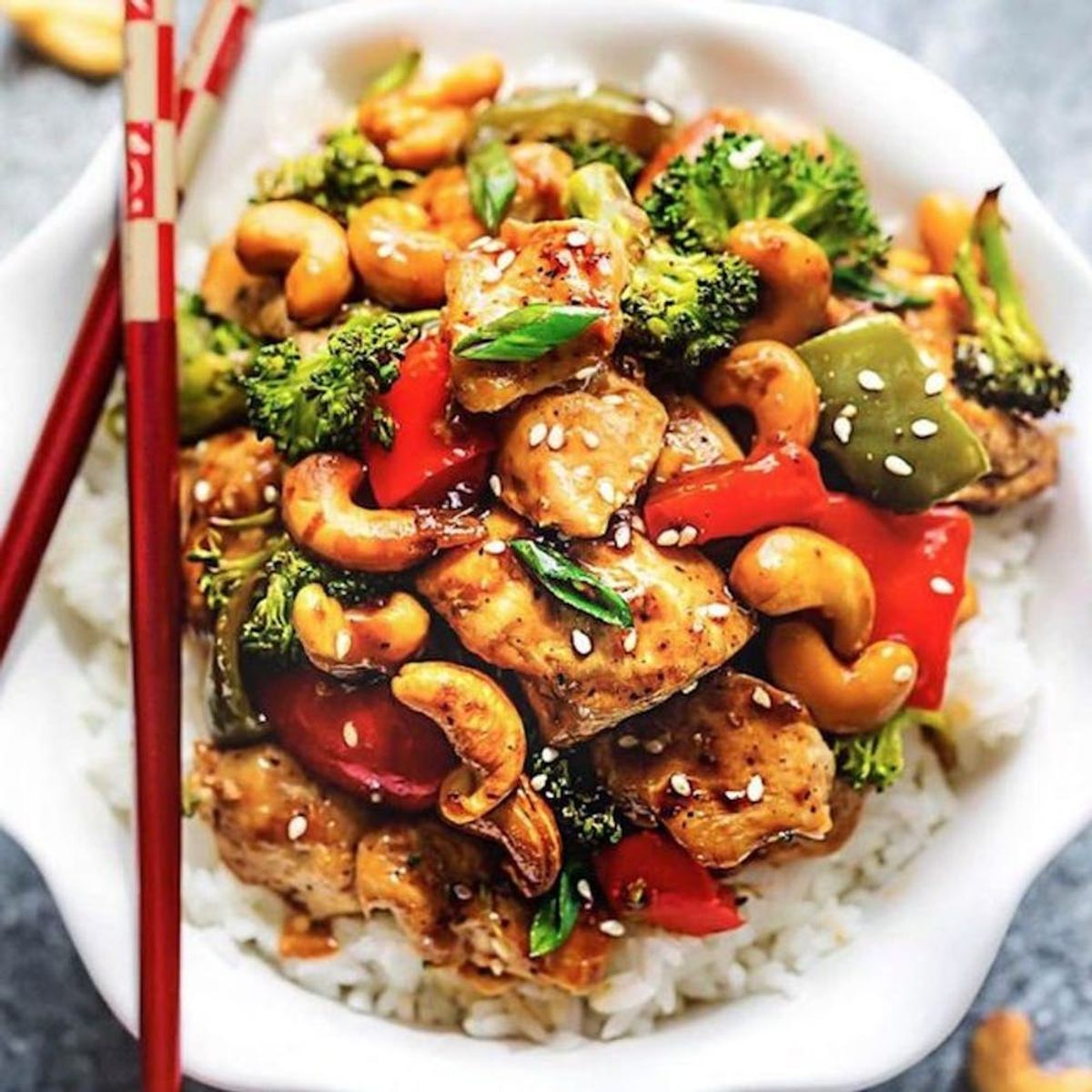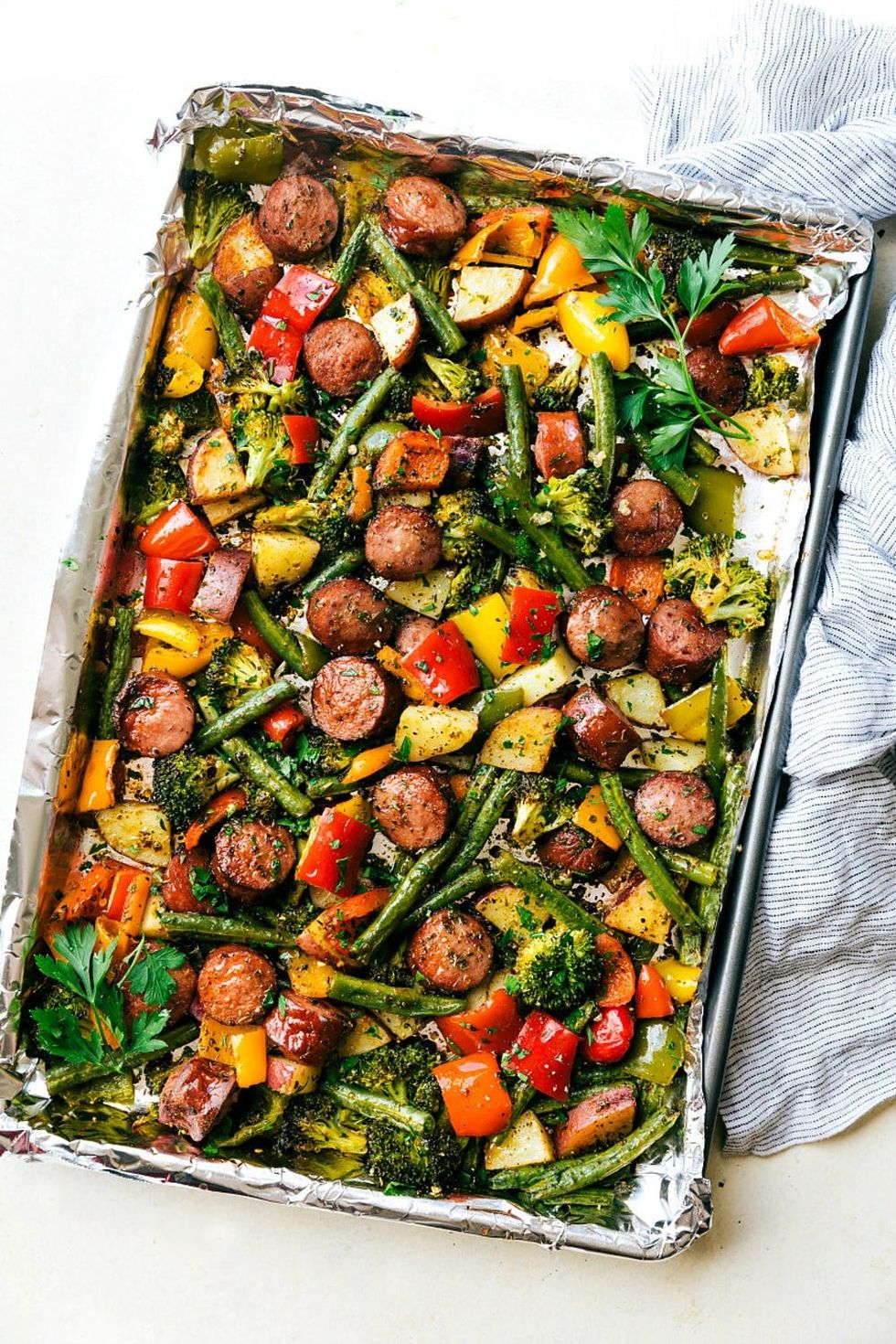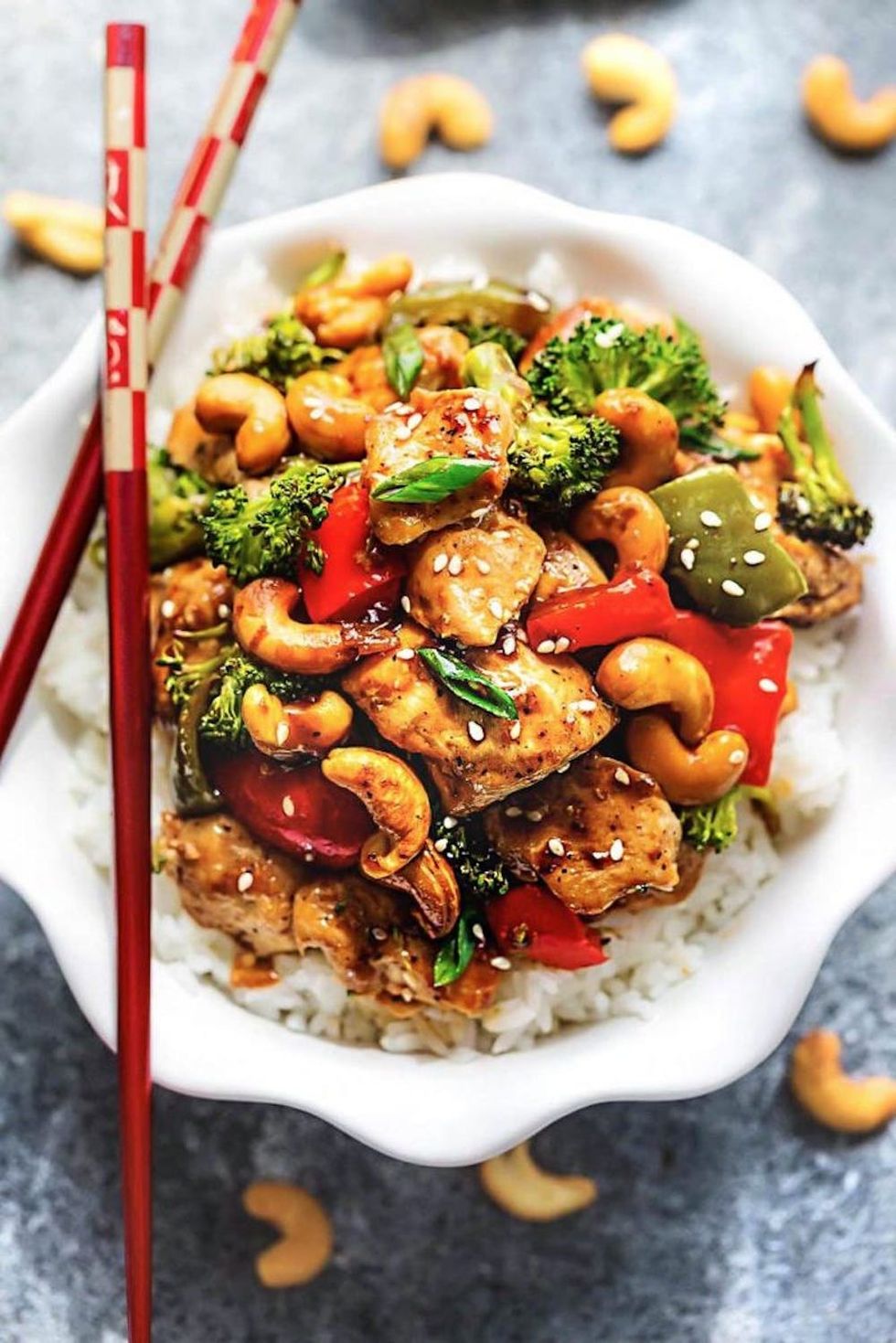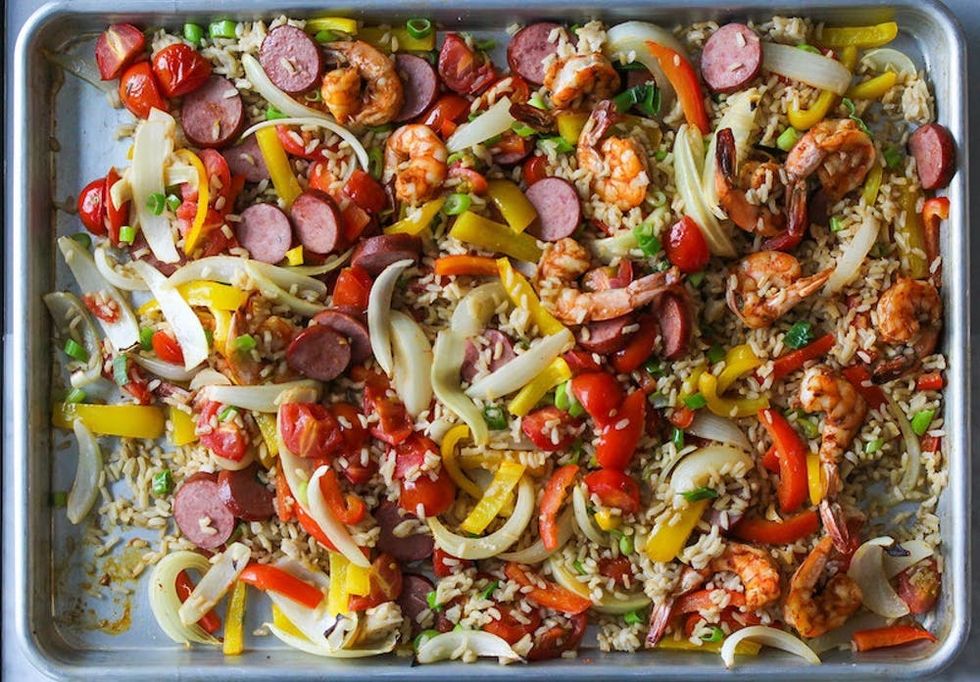A no-recipe meal is easier than you think.
Everything You Need to Know to Put Together a Sheet Pan Dinner

Sheet pan meals are right up there with Crock-Pots and one-pot pasta dinners, except even better. They require no recipe, and can be easily adjusted with whatever ingredients are in season or happen to be in your pantry. We also love how they’re so low maintenance. If you’re cooking for company or just battling a busy weeknight, you can throw this in the oven and forget about it. To learn how to make your own sheet pan masterpiece, scroll through our basic tips, and then get yourself to the kitchen.

1. Choose a veggie, protein, and something starchy. The best sheet pan dinners are those that make up a complete meal all on their own, so start with the right ingredients. For your protein, avoid cuts of meat that require braising or lots of cooking liquid. Instead, opt for shrimp, chicken, chopped bacon or pancetta, pork tenderloin, or chops. Tofu and even eggs work well too. Good starch options are potatoes and sweet potatoes, squash, or corn. Choose any veggies that are in season. This Healthy Sausage and Veggies recipe is the perfect example recipe. (via Chelsea’s Messy Apron)
2. Consider timing. Your chicken may take longer to roast than your zucchini, so plan accordingly. It’s easiest to start with the item that will take the longest to cook, and add other ingredients over time.
3. Cut everything the same size. To ensure your food cooks evenly, cut everything into the same size pieces.
4. Aromatics tie it together. A few onions, shallots, or whole cloves of garlic will infuse the rest of the food with flavor, and make your kitchen smell delicious.
5. Add your upgrades. Pick a few flavor boosters like olives, cooked and drained beans or chickpeas, nuts or seeds, capers, or coconut flakes. You can even use fruits that play nicely with savory ingredients, like apples or figs. Just be sure to add them at the appropriate time to avoid overcooking (nuts and coconut flakes just need a light toasting, so they should be added a few minutes before everything is done)

6. Toss it all in oil, and season with salt and pepper. Your main ingredients should get coated with some kind of oil or fat to prevent sticking and encourage all of that yummy caramelization that happens in the oven. Or, whisk together a simple sauce, like the soy-sauce-based version in this Cashew Chicken. In addition to salt and pepper, you can also add dried or fresh herbs. Choose woodsy ones like thyme, oregano, and sage, which stand up well in the oven. (via The Recipe Critic)
7. Add a sauce. A drizzle of something delicious after cooking will add yet another dimension of flavor. Try a gremolata, salsa verde, salsa, tahini sauce, or aioli.

8. Round out your meal, if needed. Serve your dish with rice, tortillas, or a loaf of bread if you didn’t include a starch in the sheet pan, or a side of steamed greens or a salad if you went the meat and potatoes route. This genius Sheet Pan Jambalaya calls for precooked rice to be added to the pan at the end, just long enough to reheat it. (via Cooking Light)
9. Make adjustments. Take notes! This is a great meal for experimenting. Use your first attempt as a launch point for tweaking. Adjust timing, switch out seasonal items, or add another layer of flavor like some crunch or a little Parmesan. You’ll have a go-to meal before you know it.
Need some more midweek meal inspo? Follow us on Pinterest.


















